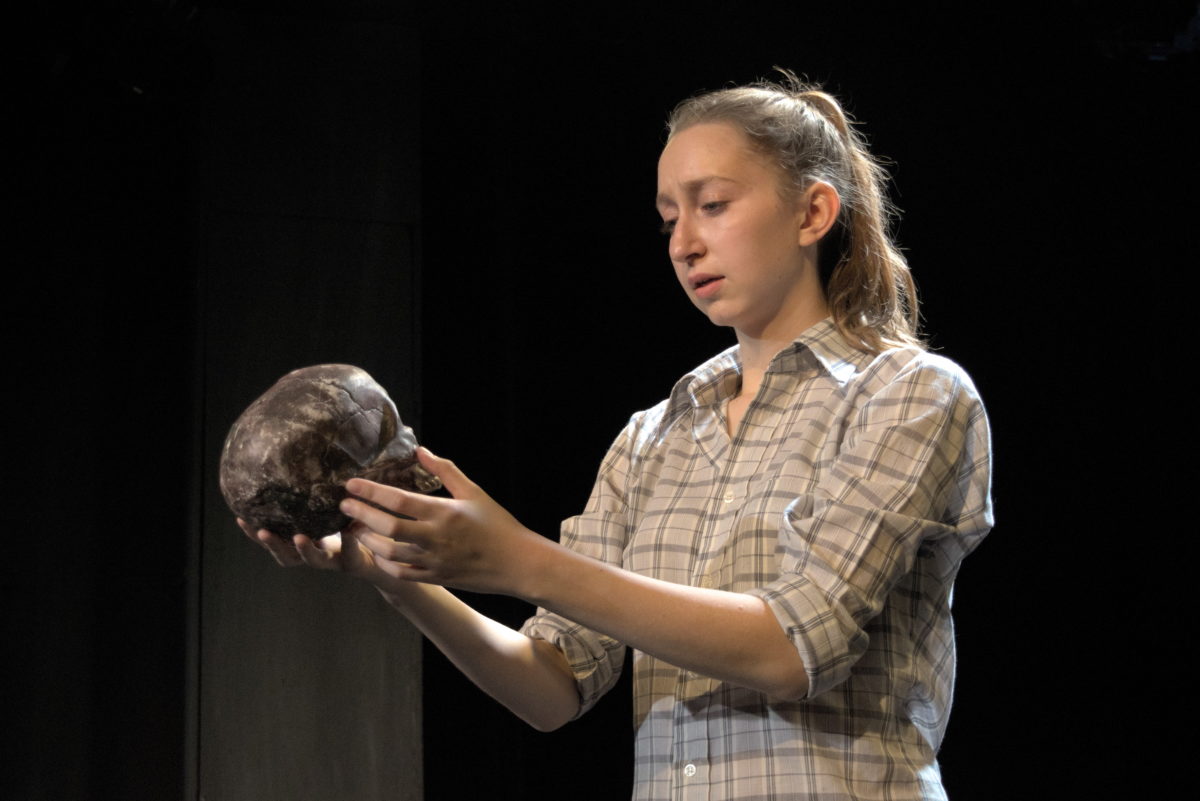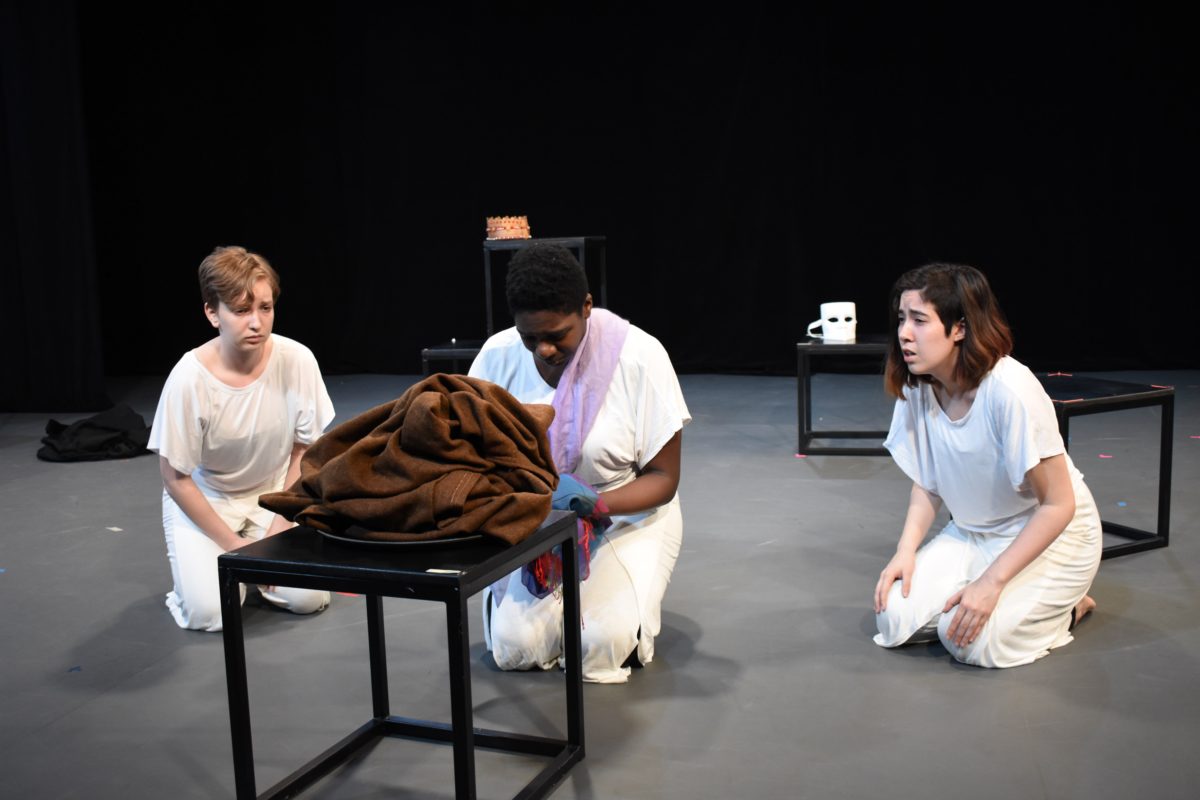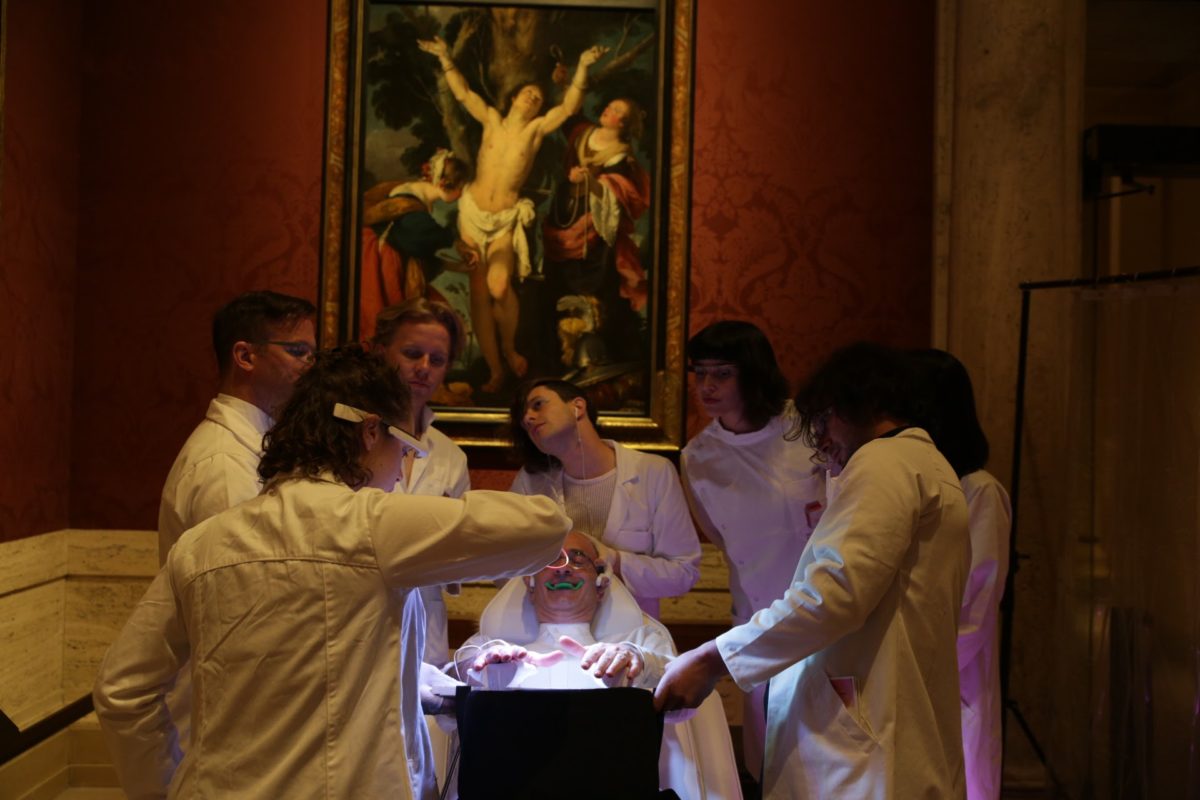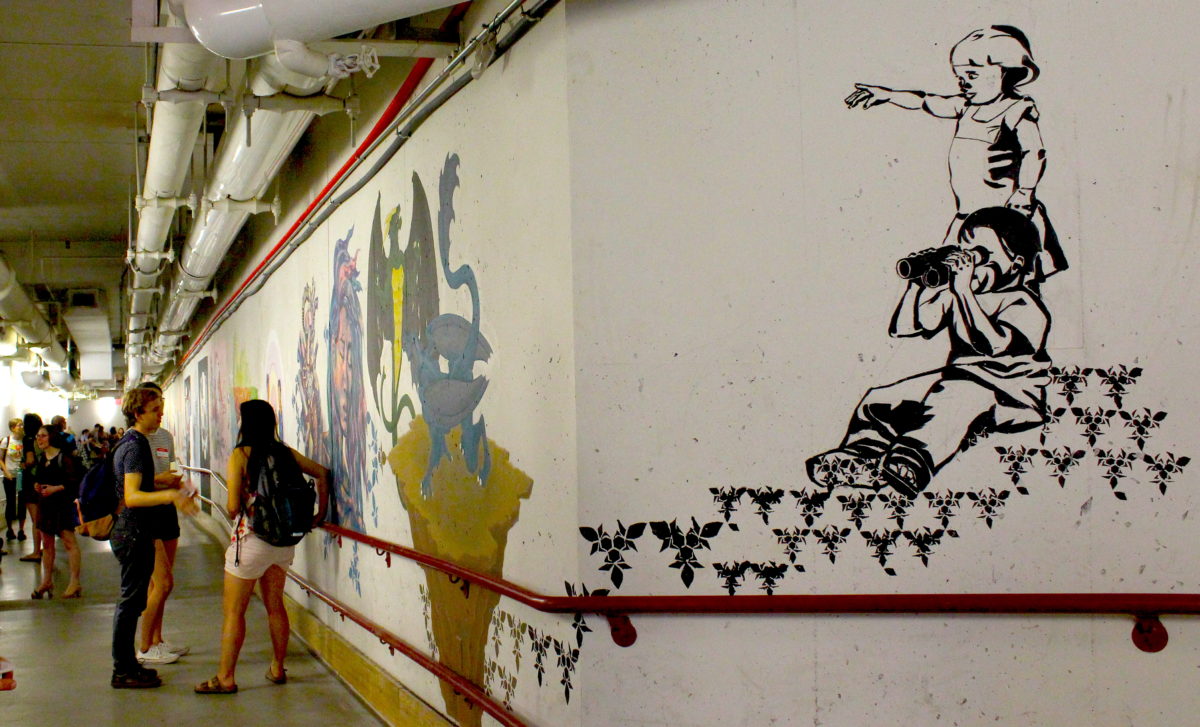The Laya and Jerome B. Wiesner Student Art Awards are presented annually to up to four students (undergraduate or graduate), living groups, organizations or activities for outstanding achievement in and contributions to the arts at MIT. An endowment fund provides a $2,000 award to each recipient. Established by the Council for the Arts at MIT in 1979, these awards honor past MIT President Jerome B. Wiesner and Laya Wiesner for their commitment to the arts at MIT.
The 2018 Recipients of the Wiesner Student Art Awards
As it is spread all over campus, it can be difficult for some to find the heart of the arts community at MIT. Fortunately, our dedicated students navigate underground hallways and numbered buildings to make their mark on the arts community and the greater art world.
This year, graduate students Laura Serejo Genes and Adam Jedidiah Haar Horowitz, and undergraduates in the class of 2018 Julia Rue and Tal Scully, have been recognized for their artistic efforts with the Laya and Jerome B. Wiesner Student Art Awards, which were created in 1979 to recognize individuals and groups that contribute to the world of art, both at the Institute and far abroad.

Laura Serejo Genes
Having attended Stuyvesant High (which, she observes, is “deeply rooted in the tradition of science, mathematics and technology”), Genes admits that, “the sciences helped me make sense of the world, but it was the arts that helped me communicate my understanding.”
Working with the “intimate” MIT Program in Art Culture and Technology (ACT), Genes has been able not only to bring together many parts of herself, but of her community as well. “We are located next to the Media Lab but are not part of the Media Lab,” she observes, speaking of the small but diverse ACT cohort. “We are in the Architecture Department but located on the other side of campus. We are located right next to the List Visual Arts Center but not officially affiliated with them in any way. It’s sort of a beautiful, relational position to many things but gives us the autonomy we need to make art that is not deferential to anything.”
Having realized while at Cooper Union that visual arts “encompass much more than drawing, painting and sculpture,” Genes has also used MIT as a palette and performance space, engaging others in her evolving oeuvre. In her 2016 piece “Flag Life,” Genes gathered diverse members of the student body (including fellow ACT participants and ROTC cadets) to offer an act of “arbitrary solidarity” before the 2016 election.
“ROTC was consulted to ensure that the flag was not affected and not an overt form of protest,” Genes explains.
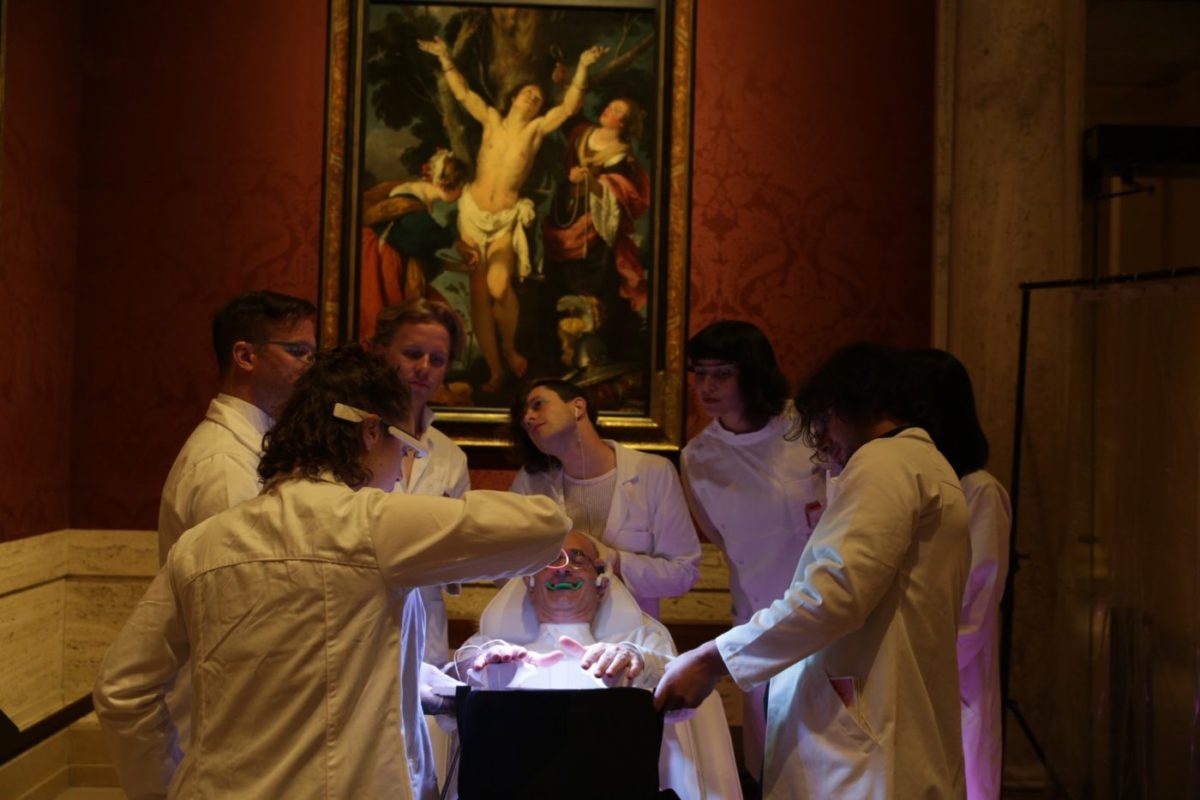
Adam Jedidiah Haar Horowitz
As the son of a playwright who is also “an incredibly agile thinker about thinking,” Horowitz has also put on his own plays and also applies a spirit of play and other family values to use in his own work.
“The intersections between performance and neuroscience became clear as I began to work with human subjects,” recalls the budding brain physiologist, who claims “science is art” and who also strives to be “focused on wellness broadly construed…informed by brain science, [and] inspired by art, enacted through design and tech.”
Having had personal experience with epilepsy, Horowitz wanted to delve deeper into the mind to see how it works (or fails to). At MIT, he has found a “fountain of productive play” that has been fed by diverse scholars and colleagues who all help his mind work more effectively.
“The community is active and curious and engaged,” Horowitz observes, “and there’s nothing better than the kind of intellectual and energetic osmosis that happens here.”
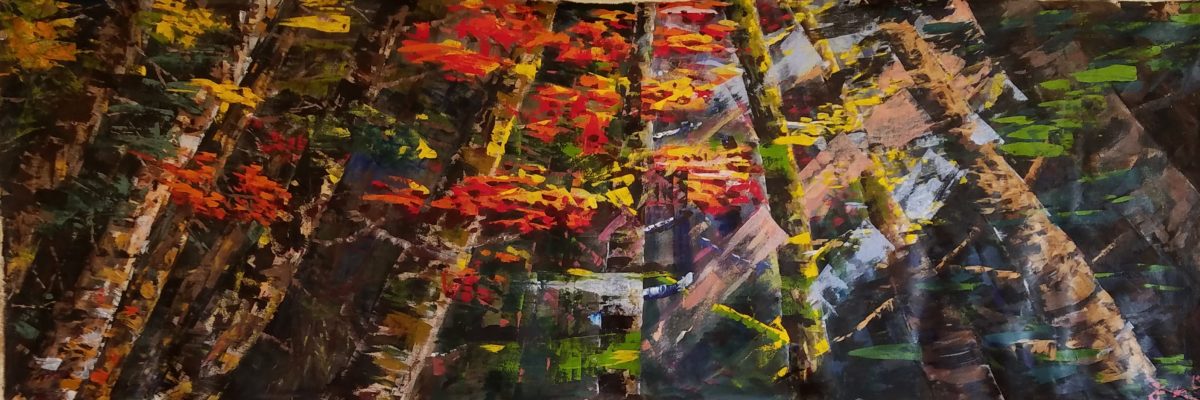
Julia Rue
As Horowitz was raised with greasepaint is his blood, Rue has “always been interested in learning how things work and…how to make things.” She even remembers a preschool experiment involving marshmallows that almost ruined a friend’s microwave. “We got in a lot of trouble,” Rue recalls, “but I remember being very proud of our little experiment!”
As passionate as she is about creation, Rue is equally as involved and in love with art. “I think that mindset of trying new things continues to pervade my art,” suggests Rue, who has been an integral part of a series of murals around campus.
And while others may still consider them separately, Rue asserts that art and engineering (in her case, mechanical) live in “parallel sides of myself and have “come together” through her work in ACT. In fact, may of her projects (such as adaptable textiles known as Perfect Fit) stitch together both sides.
“Now, I’m trying very hard to look careers to truly combine and work with these two skill sets,” she says, expressing a hope that her own efforts will “encourage…cross-collaboration between the arts and tech.”
In the meantime, Rue continues to take artistic and scientific inspiration from the people around her, all of whom she admires for pursuing their own diverse interests.
“All of my fellow peers are daily inspirations to me,” Rue maintains. “I have yet to meet someone at MIT that hasn’t done something extraordinary that I haven’t done yet, and that inspires me to continually search and push myself.”
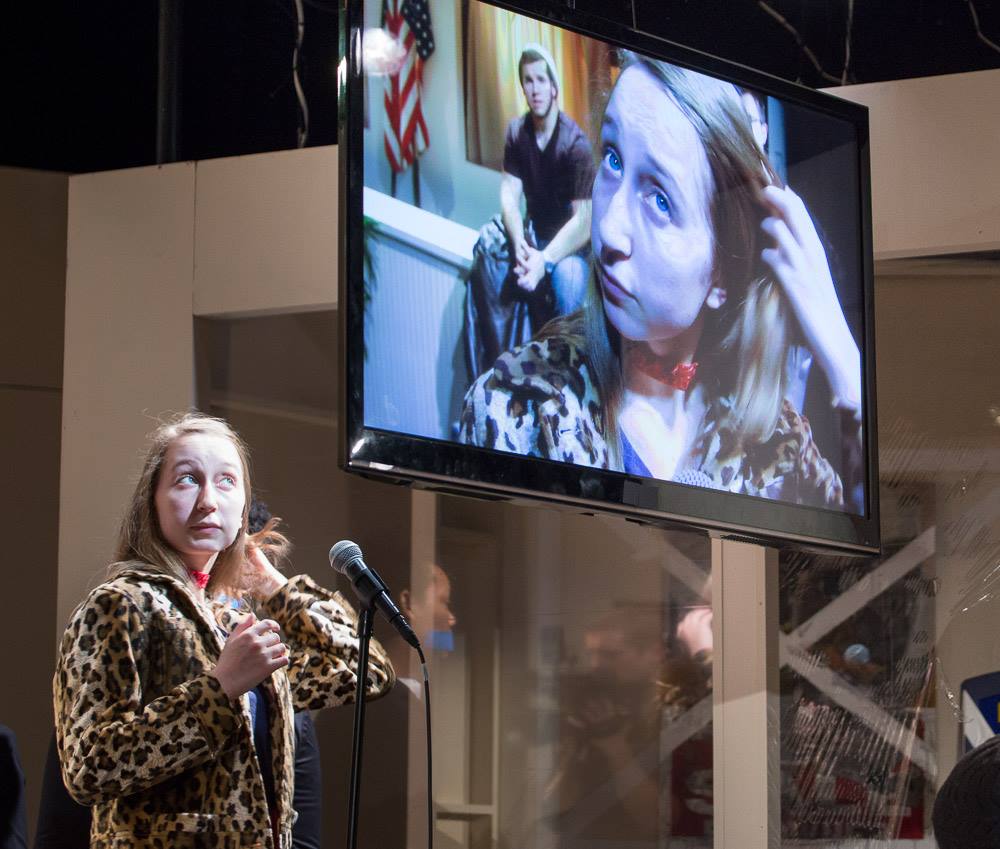
Tal Scully
A double-major in physics and theater arts, Scully also takes full advantage of all that MIT has to offer. “I grew up in a house of science,” the daughter of two research scientists explains, “and have been excited about science since I was little.”
An early physics major with a concentration in chemistry, Scully spent the summer researching computational biology at Harvard. “I loved being able to use math to extract clues to the most basic biological questions from data,” she said, noting that he will return to our neighboring institution to pursue a PhD this fall.
As both her father and mother are scientists, Scully says (thankfully) that the field “never seemed out of reach or abnormal for a woman.” She adds that her parents were also supportive of her theatrical proclivities as well.
“I’ve been involved in the performing arts for nearly my whole life,” the double major recalls. “Music and theater have become much more central to my identity since coming to MIT.” Looking at her two paths, Scully suggests that “the connection between art and science goes beyond developing good communication skills,” and both engages and encourages focus and creativity in all pursuits.
“Art has provided a way for me to understand how I think and to feel comfortable not knowing how to approach something,” she says, citing a key component of effective investigation.
While some may wonder about the combination of art and science, Scully maintains that it is not only natural but useful, especially at MIT.
“No one is categorized by their interests,” she says. “They are just accepted as a passionate human being… There is a huge amount of care and love in that community, and among MIT students in general. That’s easily my favorite thing about MIT.”

